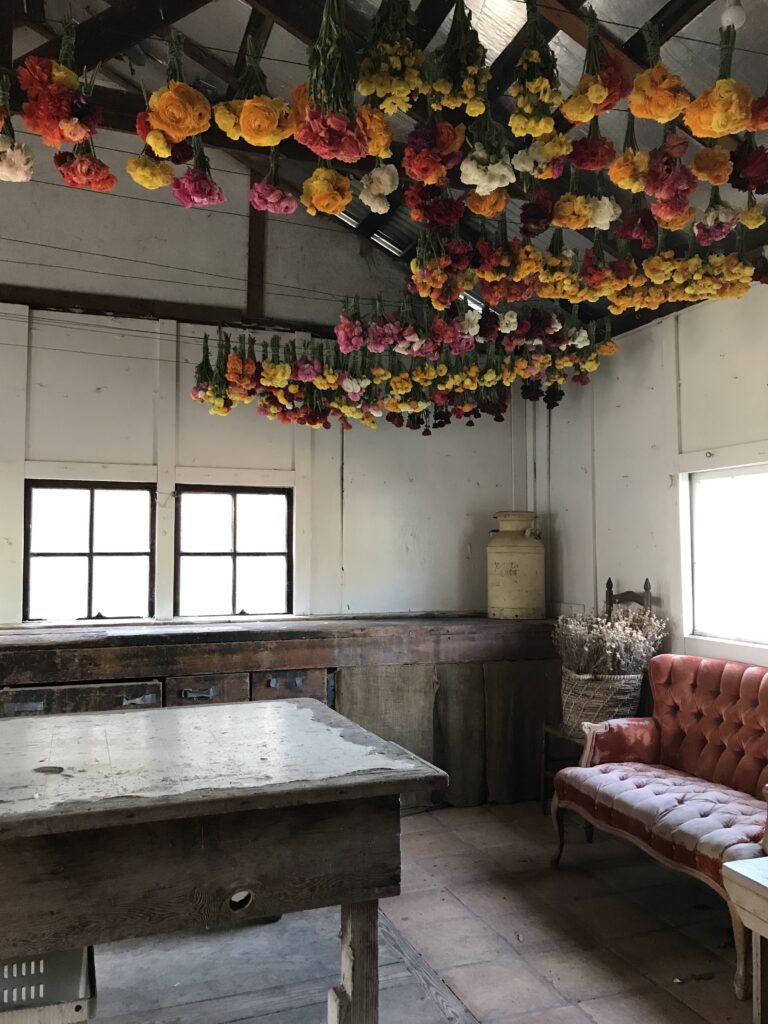This past week, felt more like a normal spring week. After so many non-normal weeks, it took a little adjusting to – the sun and warmth, the faster pace, and even the sounds.
The most noticeable noise was the constant hum of tractors. All functioning machines were in use, preparing beds for planting, spraying compost tea in the orchard, or cultivating (farmer lingo for weeding), and there is a lot more to do after such a long period of time when it was too wet to use tractors.
During the winter we plant most of our fields in cover crops. By this time of year those cover crops are quite tall and need to be mowed. We’d love it if the sheep (our non-mechanical mowing option) could “mow” all of them. The sheep are moving through as many fields as fast is feasible, but we don’t have time for them to get through everything; the cover crops are at the right stage to be terminated, and we need that space to plant. They do fast work though – just check out what they do in a day, particularly when limited to a relatively small section of field at a time. If given a lot of space to roam, they’re more selective with what they eat, nibbling their favorite plants and leaving the less favored. They’re loving the current cover crop mix, but among the varieties, they seem to prefer the peas and vetch and are less fond of the members of the mustard family, like tillage radish.


Most of the cover crops will be mowed by tractor. In particularly tall fields, one tractor will go first to mark the furrows between beds, then that’s followed by a tractor with a mower to cut the cover crop into small pieces. After, we use a number of different elements to incorporate the cover crop into the top layer of soil, add supplemental compost, then shape and prepare the beds for planting.
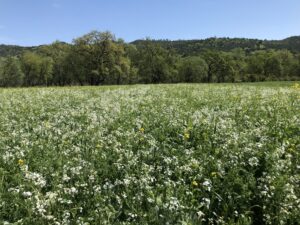
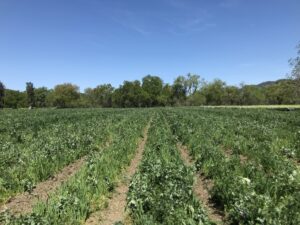
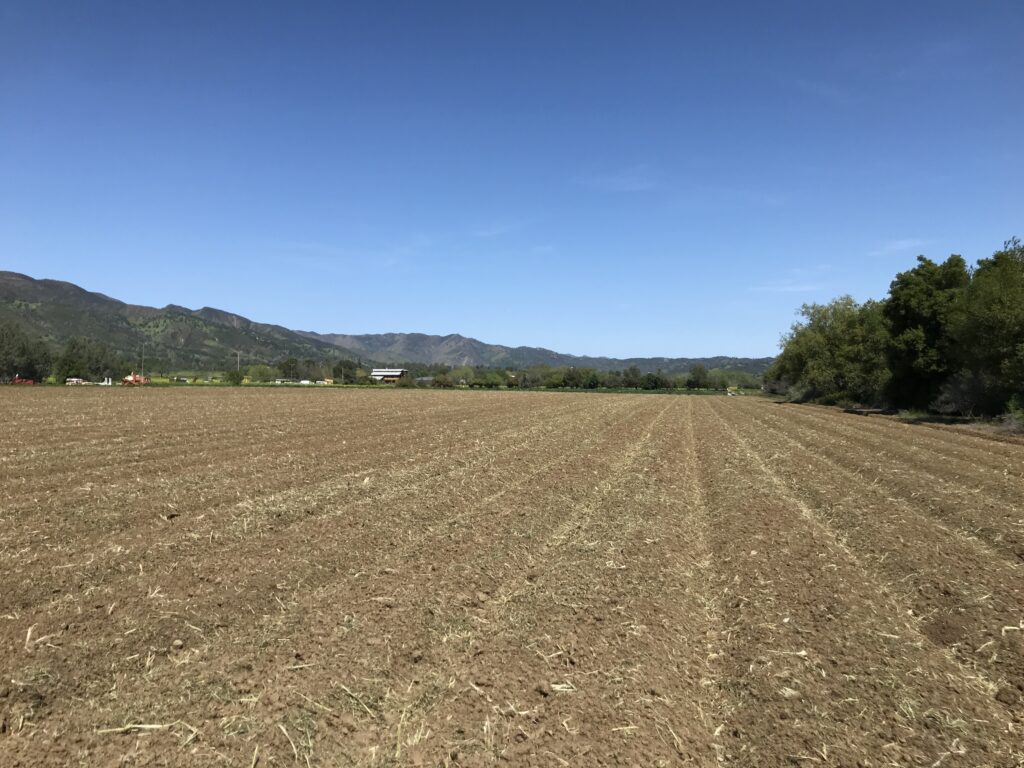
We did do a little bit of planting this week, some direct seeding, some herbs, and most exciting, on Saturday we planted nine rows of our first 2023 tomatoes, a big milestone.
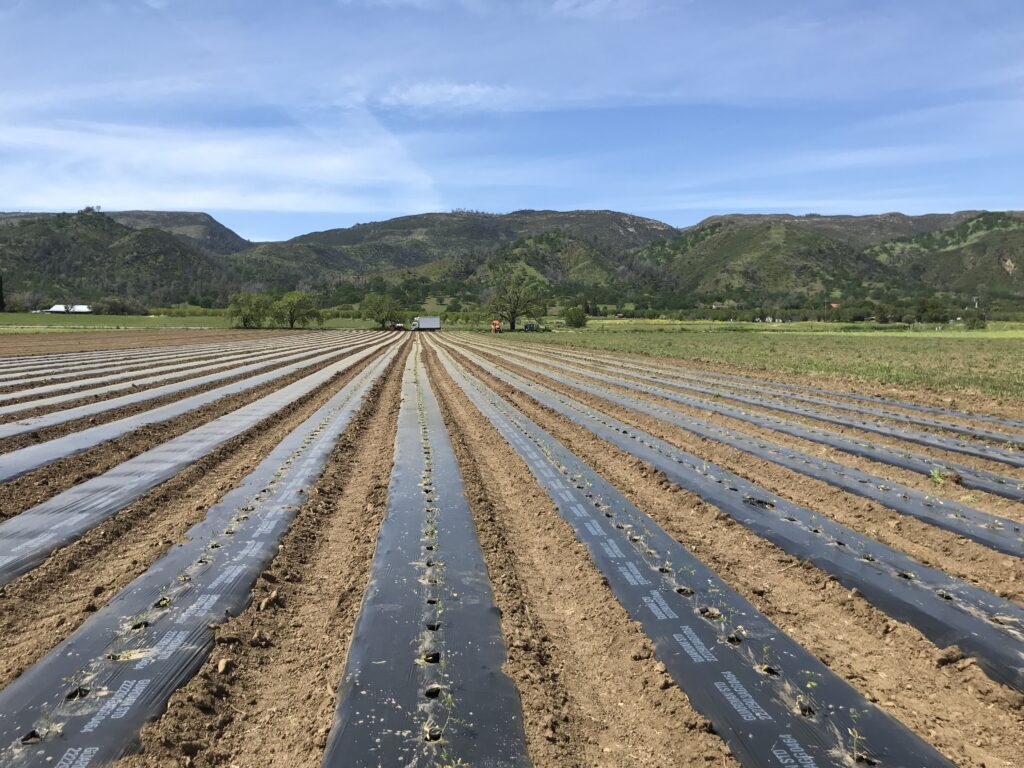
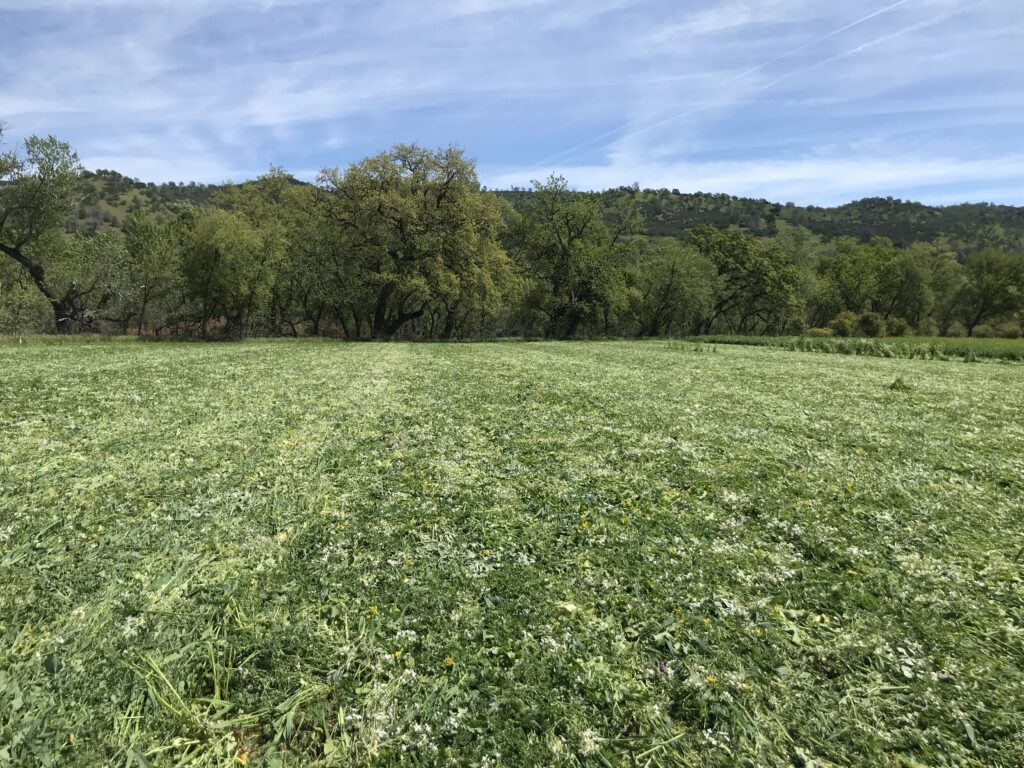
On a few beds, we’ve rolled the cover crop with a roller crimper instead of mowing it, meaning the cover crop wasn’t chopped up, it was just flattened, as shown in the photo above. If we were doing no-till planting, this might be where we stop. We are doing some no-till experimental fields, but on several fields, we’re doing this to slow down cover crop growth and keep habitat for beneficial insects as long as possible before doing our normal mowing and incorporation regimen.
Another noticeable “new” sound this week was the sound of sprinklers; I’d almost forgotten what they sound like! Despite the copious amounts of rain we’ve received this year, it has dried up enough that we need to irrigate. We’re setting up drip tape in the summer flowers and vegetables and the spring crops will be watered exclusively by sprinkler. For those who haven’t heard the sound of sprinklers, I tried capturing it in this video.
Speaking of flowers, the first flowers are hanging to dry in the Wreath Room! I’d also (almost) forgotten what that looked like, even though it was just a few months ago that the room was completely full of flowers drying so they could be incorporated into a wreath.
– Elaine Swiedler, CSA Manager
